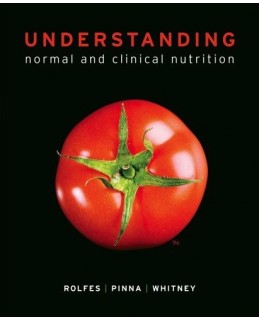Williams’ Basic Nutrition & Diet Therapy, (LPN Threads) 14th Edition by Staci Nix – Test Bank
Digital item No Waiting Time Instant DownloadISBN-13: 978-0323083478 ISBN-10: 0323083471Authors: Staci Nix McIntosh MS RD CDPublisher : MosbyEdition: 14th
Williams’ Basic Nutrition & Diet Therapy, 14e (LPN Threads) 14th Edition by Staci Nix – Test Bank
MULTIPLE CHOICE
1. Promoting a health care service that improves diabetes management for the elderly in a community would assist in which of the following?
|
a. |
supporting the National Health Goals-Healthy People 2020 |
|
b. |
reducing world hunger in the United States and Asia |
|
c. |
improving Medicare reimbursement claims |
|
d. |
providing access to child care services for children |
ANS: A
Healthy People 2020 has a wide influence and is the focus of the nation’s main objective to promote health and prevent disease.
DIF:Cognitive Level: ApplicationREF:3-Feb
TOP: Nursing Process: Implementation MSC: NCLEX: Health Promotion and Maintenance
2. A patient requires a nutrition assessment. The most appropriate professional to perform the assessment is a
|
a. |
physician. |
|
b. |
nurse. |
|
c. |
public health nutritionist. |
|
d. |
registered dietitian. |
ANS: D
The registered dietitian is the nutrition expert registered with the Commission of Dietetic Registration (CDR), the certifying agency of Academy of Nutrition and Dietetics. Registered dietitians are the only professionals who have met strict educational and professional prerequisites and passed a national registration examination, which would properly prepare them to conduct a nutrition assessment.
DIF:Cognitive Level: ApplicationREF:1
TOP:Nursing Process: Assessment
MSC: NCLEX: Safe and Effective Care Environment: Management of Care
3. The sum of all body processes inside living cells that sustain life and health is
|
a. |
science. |
|
b. |
digestion. |
|
c. |
metabolism. |
|
d. |
nutrition. |
ANS: C
Metabolism is the sum of all chemical changes that take place in the body. Metabolism provides energy, builds tissue, and regulates metabolic processes in the body.
DIF: Cognitive Level: Knowledge REF: 4-Mar TOP: Nursing Process: Planning
MSC:NCLEX: Physiological Integrity: Physiological Adaptation
4. The nutrients that provide the body with its primary source of fuel for energy are
|
a. |
vitamins. |
|
b. |
minerals. |
|
c. |
fiber. |
|
d. |
carbohydrates. |
ANS: D
Carbohydrates (e.g., starches and sugars) are the body’s primary fuel to carry out necessary processes; fat is the secondary source of energy.
DIF: Cognitive Level: Knowledge REF: 4 TOP: Nursing Process: Planning
MSC:NCLEX: Physiological Integrity: Physiological Adaptation
5. Which of the following is the most accurate statement regarding the functions of protein?
|
a. |
Proteins can be a primary fuel source even if there is adequate carbohydrate intake. |
|
b. |
Proteins are a necessary nutrient to provide energy for the body in times of stress. |
|
c. |
Proteins can be used as coenzyme factors during cell metabolism. |
|
d. |
Proteins are essential to tissue building and repair within the body. |
ANS: D
The primary function of proteins is to provide amino acids, which are the building units necessary to build and repair tissues within the body. This is a constant process that ensures adequate growth and maintenance of tissues for a strong body.
DIF:Cognitive Level: ComprehensionREF:4
TOP:Nursing Process: Assessment
MSC:NCLEX: Physiological Integrity: Physiological Adaptation
6. A 65-year-old man requires 2000 kcal/day without any specific fat or carbohydrate requirements. The approximate number of kilocalories per day from fat his diet should provide is _____ kcal/day.
|
a. |
400 to 700 |
|
b. |
100 to 300 |
|
c. |
500 to 800 |
|
d. |
900 to 1200 |
ANS: A
Fat should provide no more than 20% to 35% of the total kilocalories per day, so for a 2000-kcal diet 400 to 700 kcal should be provided.
DIF: Cognitive Level: Application REF: 4 TOP: Nursing Process: Planning
MSC: NCLEX: Health Promotion and Maintenance
7. The body’s main storage form of carbohydrate is
|
a. |
glycogen. |
|
b. |
glycerol. |
|
c. |
glucagon. |
|
d. |
glucose. |
ANS: A
Glycogen is a polysaccharide that is the main storage form of carbohydrate in the human body. It is mainly stored in the liver and to a lesser extent in muscle tissue.
DIF: Cognitive Level: Knowledge REF: 4 TOP: Nursing Process: Planning
MSC:NCLEX: Physiological Integrity: Physiological Adaptation
8. The number of kilocalories provided by one slice of bread that contains 30 g carbohydrate, 3 g protein, and 1 g fat is _____ kcal.
|
a. |
34 |
|
b. |
136 |
|
c. |
141 |
|
d. |
306 |
ANS: C
Calculate as follows: Carbohydrate provides 4 kcal/g, protein provides 4 kcal/g, and fat provides 9 kcal/g. Therefore:
30 g carbohydrate × 4 kcal/g = 120 kcal
3 g protein × 4 kcal/g = 12 kcal
1 g fat × 9 kcal/g = 9 kcal
= 141 total kcal (120 kcal 12 kcal 9 kcal)
DIF:Cognitive Level: ApplicationREF:4
TOP:Nursing Process: Assessment
MSC:NCLEX: Physiological Integrity: Physiological Adaptation
9. The number of kilocalories from fat in a sandwich that contains 22 g fat is _____ kcal.
|
a. |
88 |
|
b. |
132 |
|
c. |
154 |
|
d. |
198 |
ANS: C
Fat provides 9 kcal/g. Thus, 22 g fat × 9 kcal/g = 198 kcal.
DIF:Cognitive Level: ApplicationREF:4
TOP:Nursing Process: Assessment
MSC:NCLEX: Physiological Integrity: Physiological Adaptation
10. The number of kilocalories from protein in a sandwich that contains 15 g protein is _____ kcal.
|
a. |
45 |
|
b. |
60 |
|
c. |
75 |
|
d. |
135 |
ANS: B
Protein provides 4 kcal/g. Thus, 15 g protein × 4 kcal/g = 60 kcal.
DIF:Cognitive Level: ApplicationREF:4
TOP:Nursing Process: Assessment
MSC:NCLEX: Physiological Integrity: Physiological Adaptation









Reviews
There are no reviews yet.